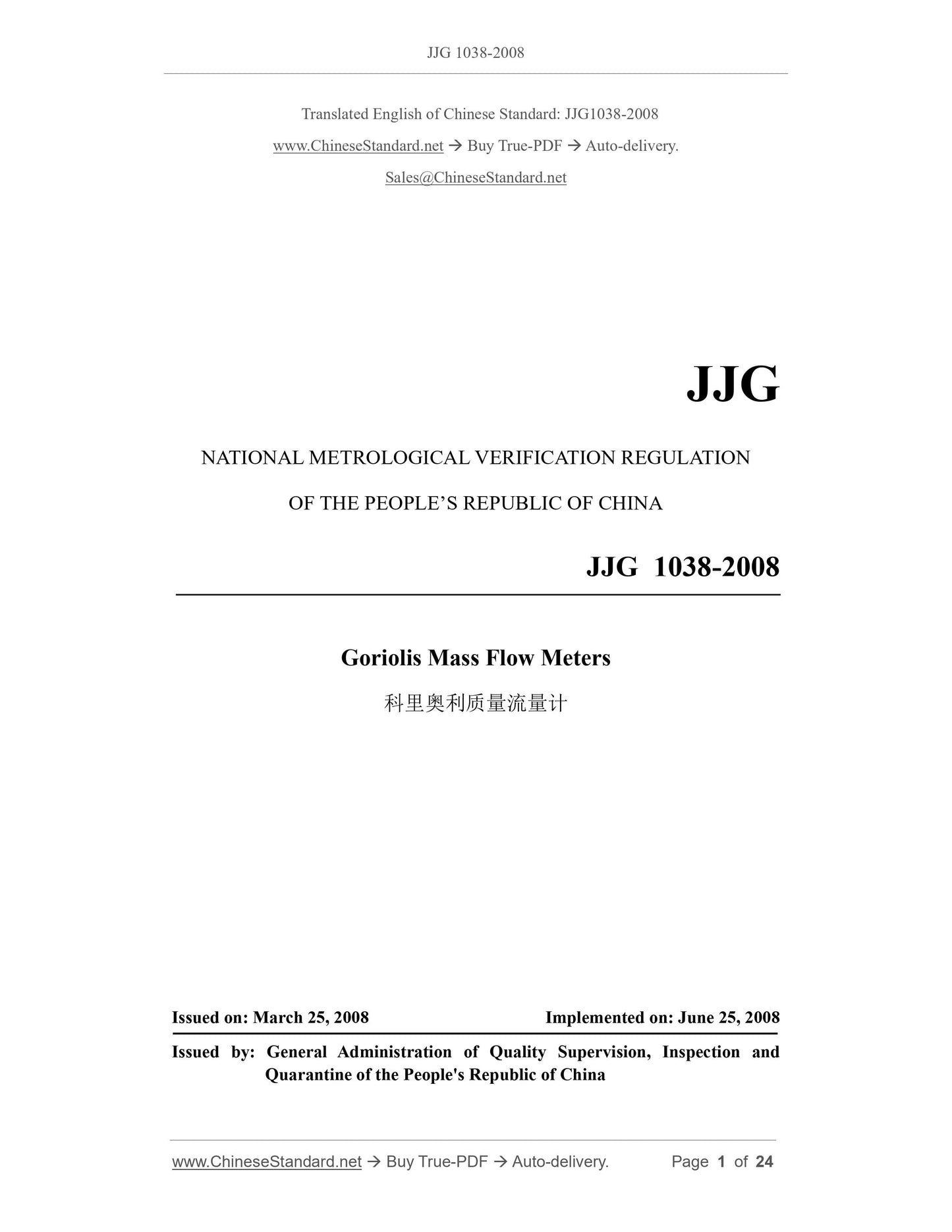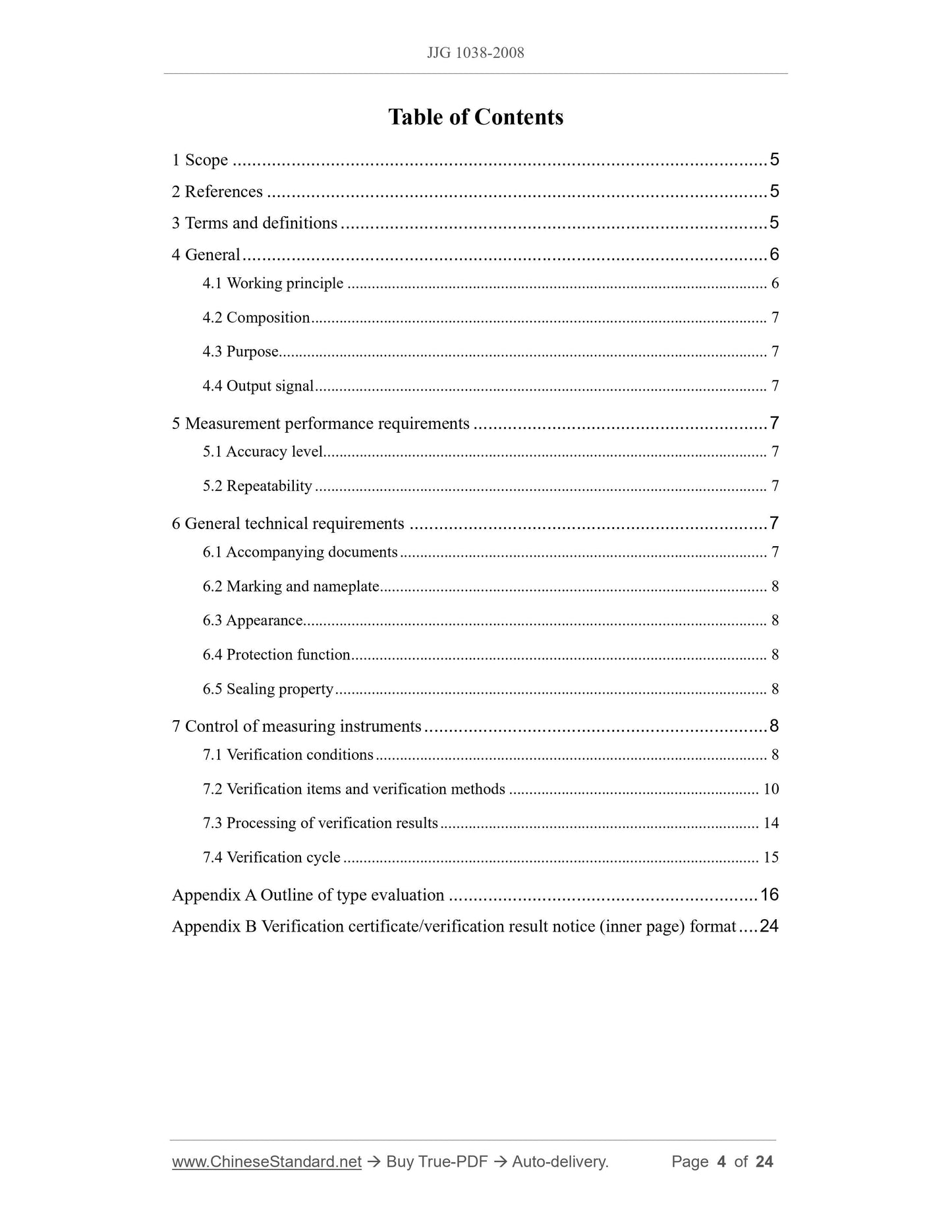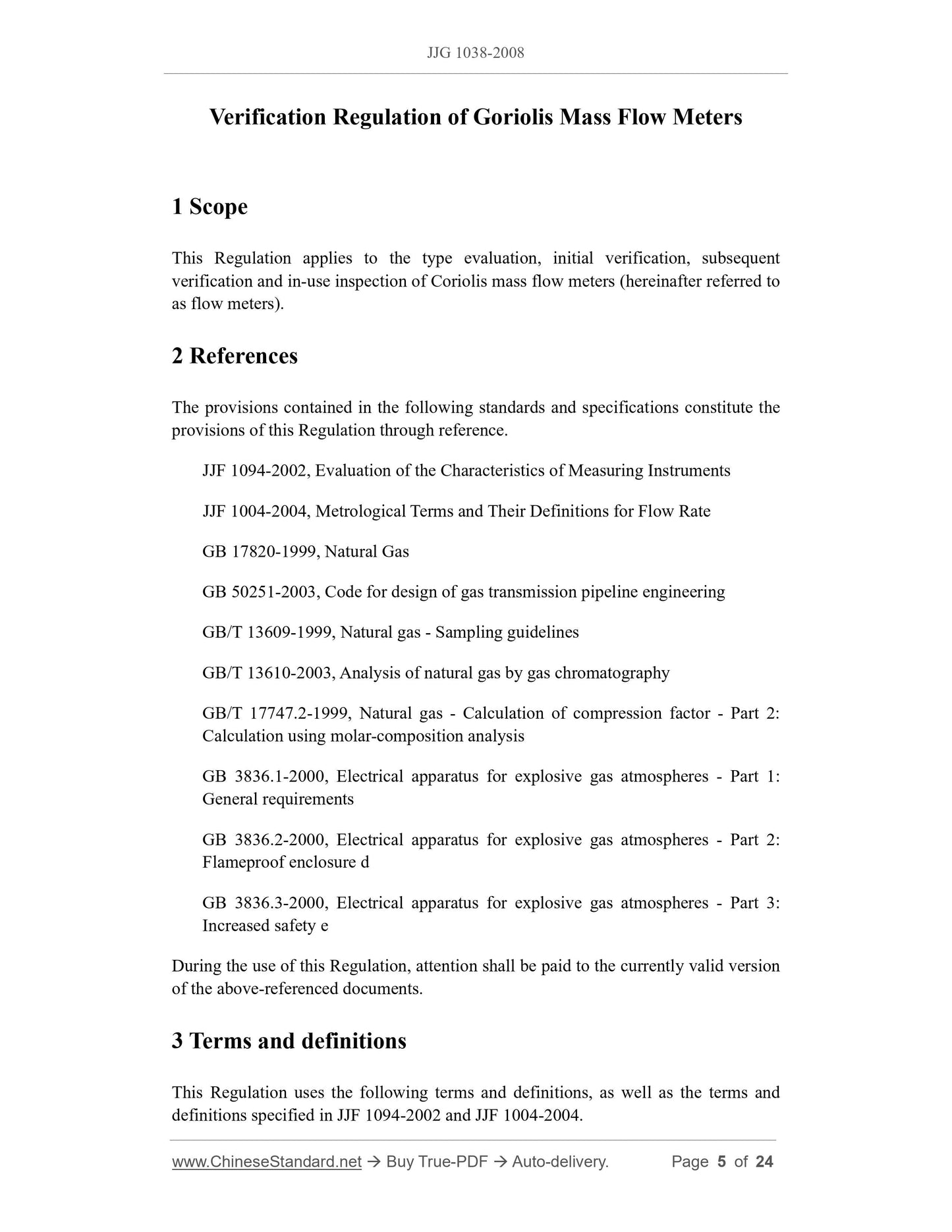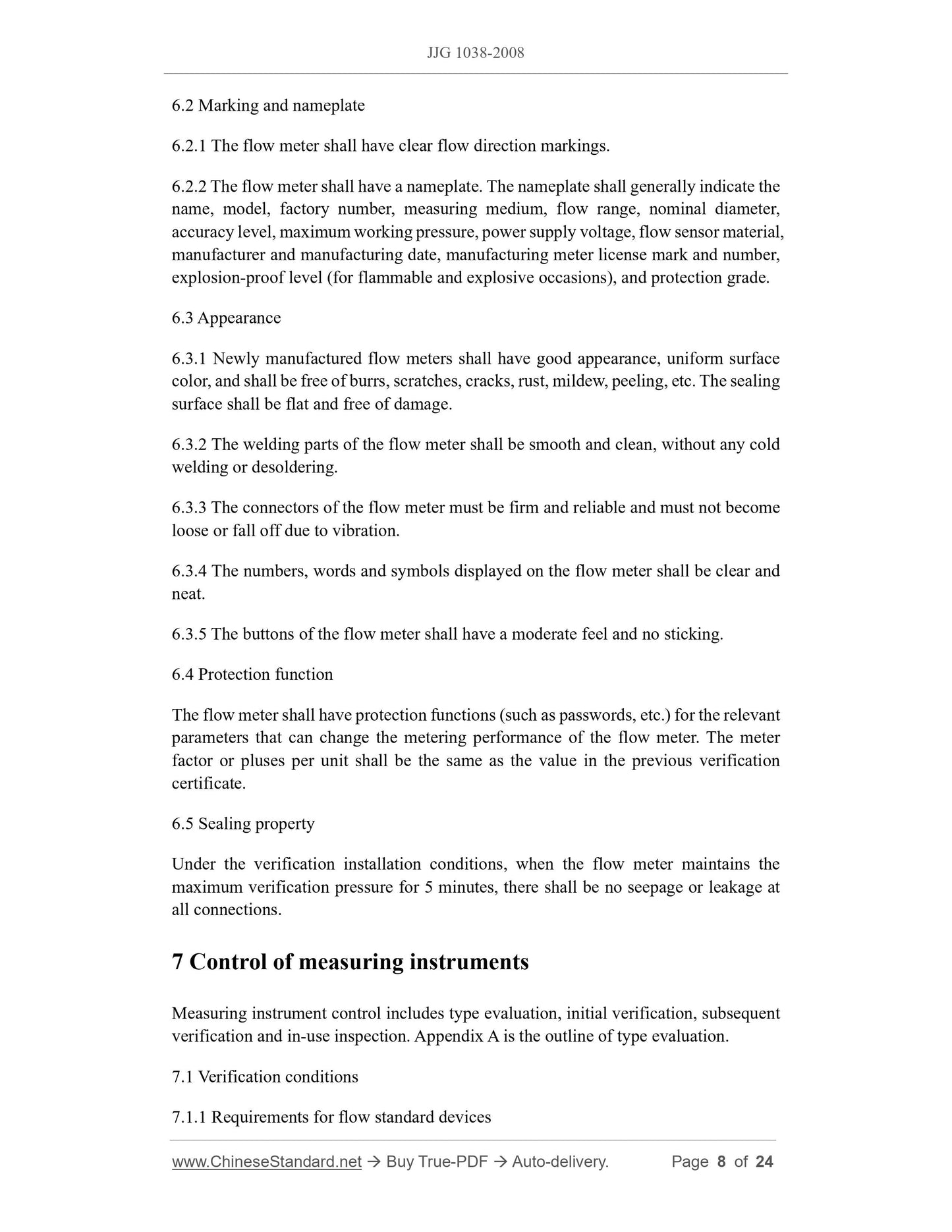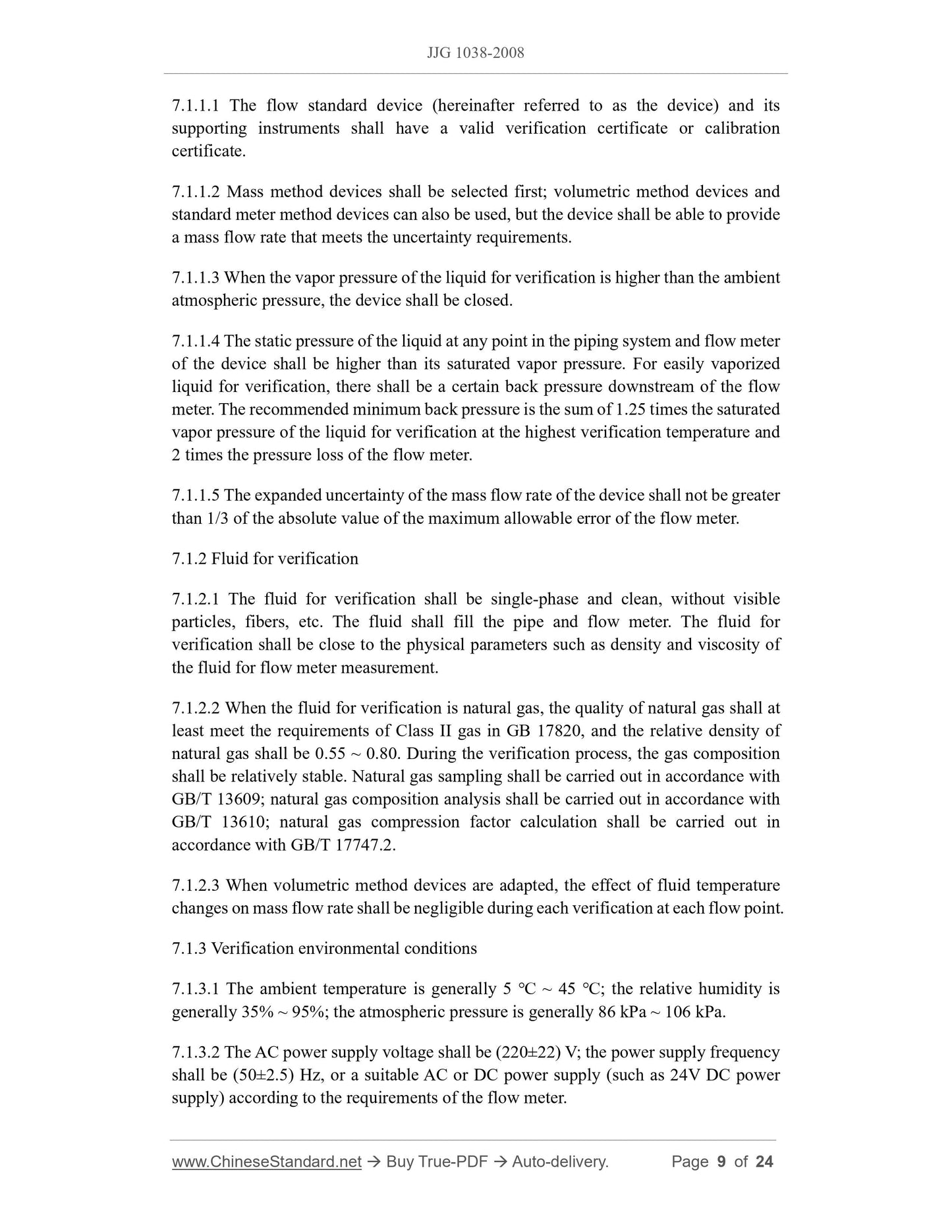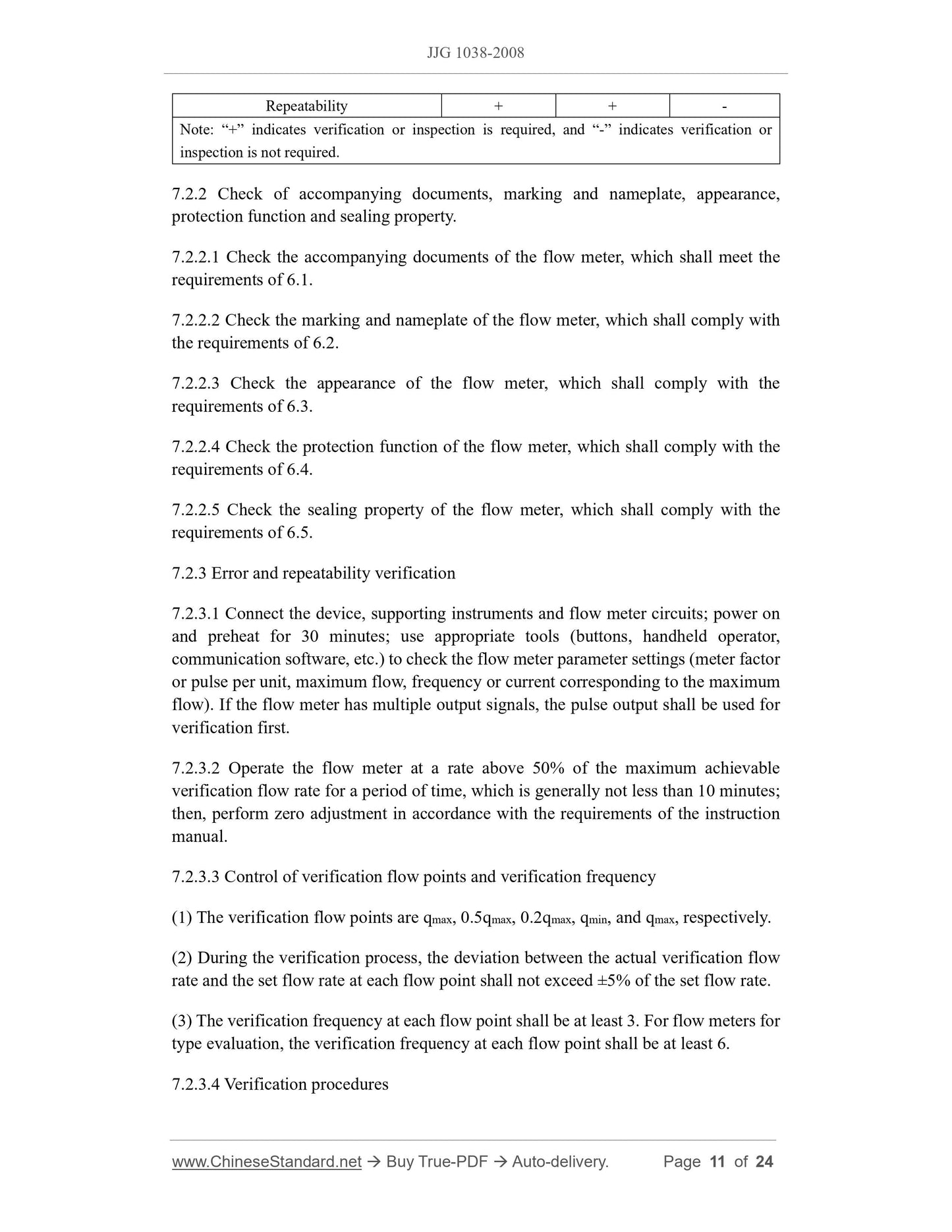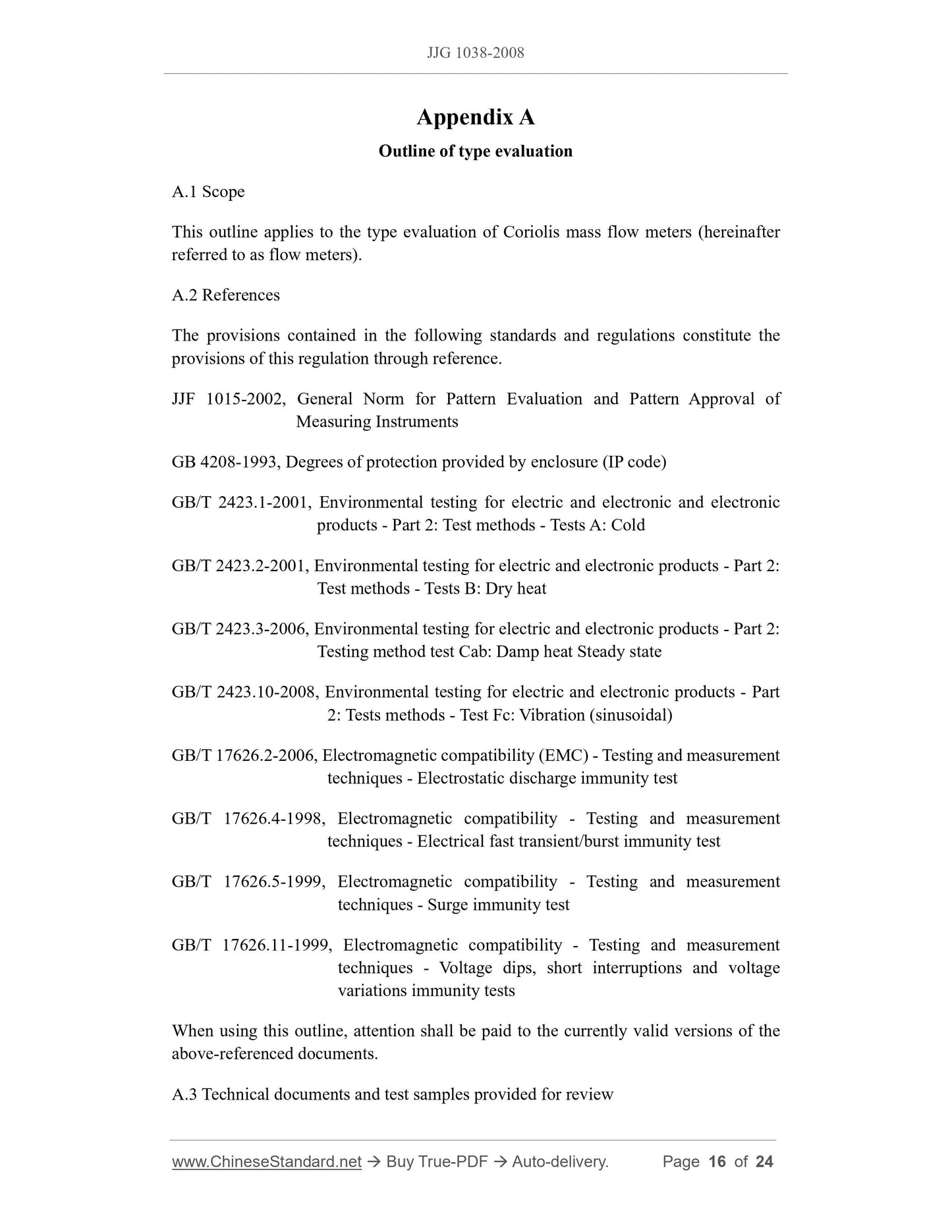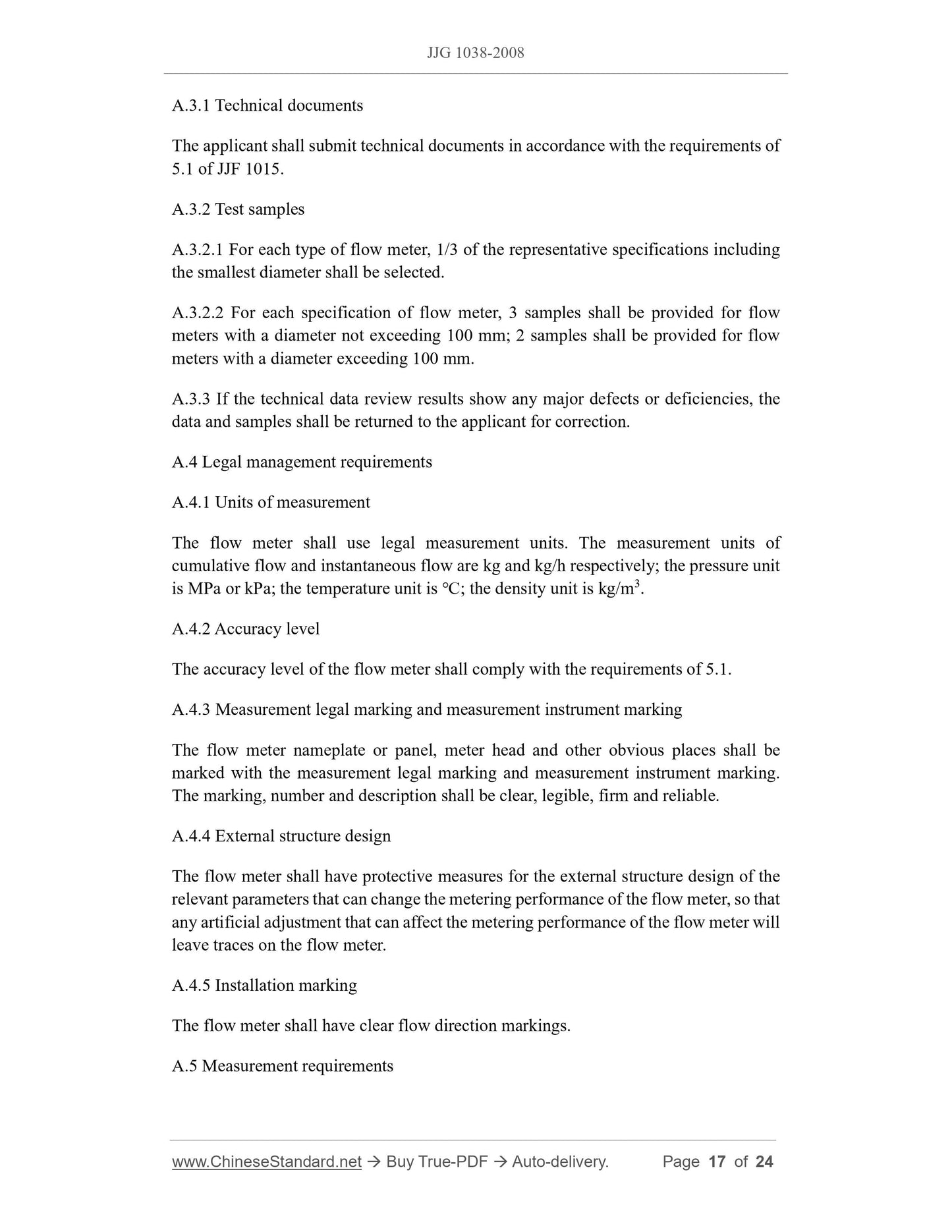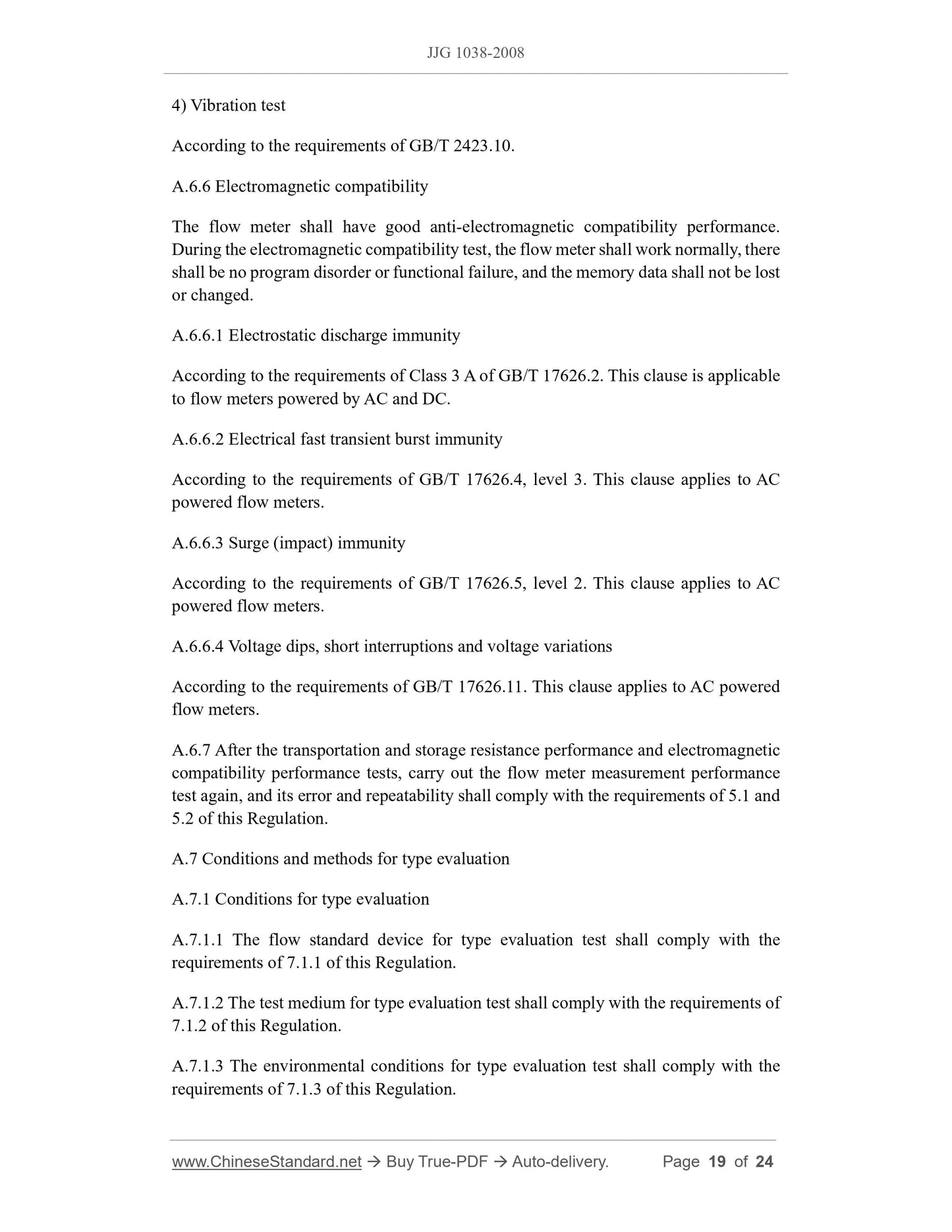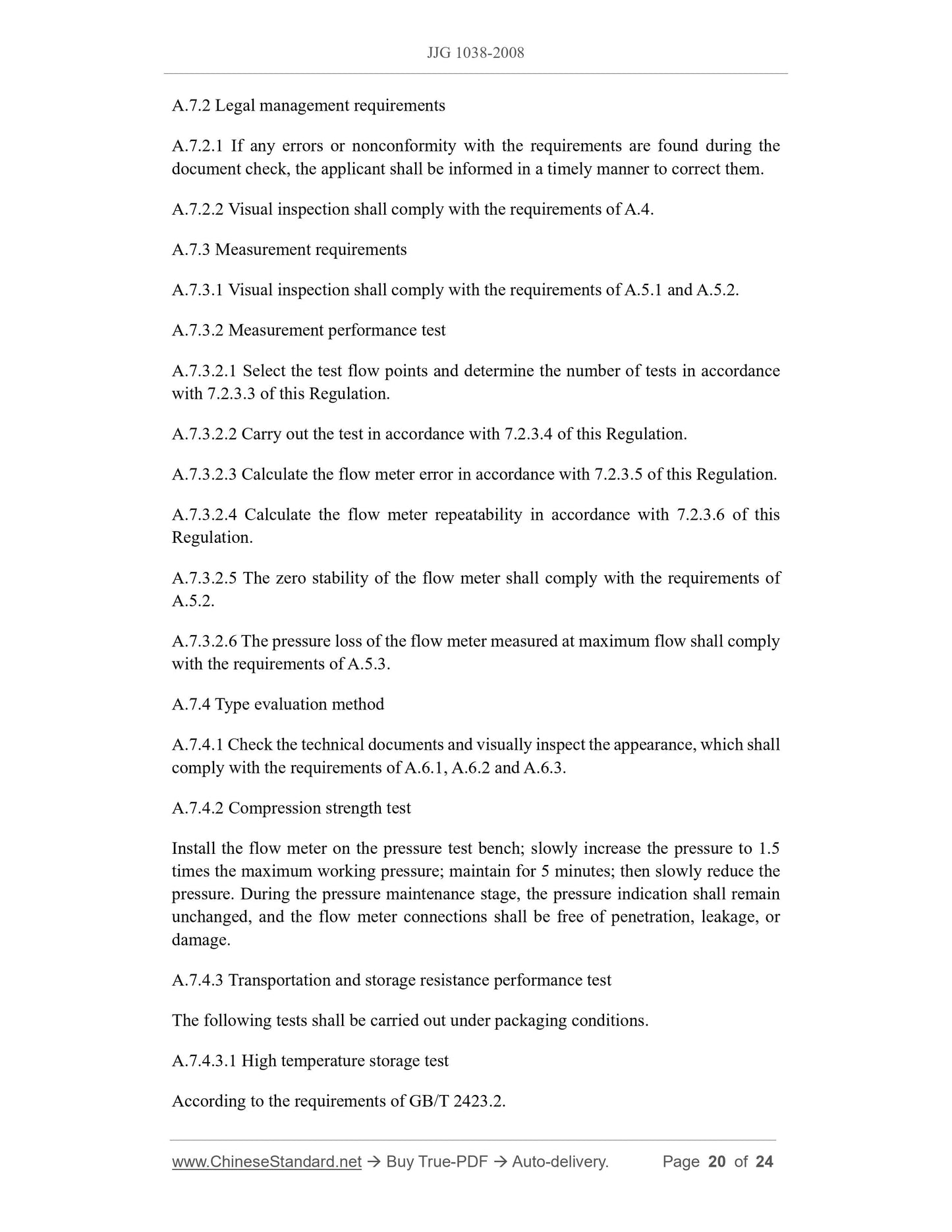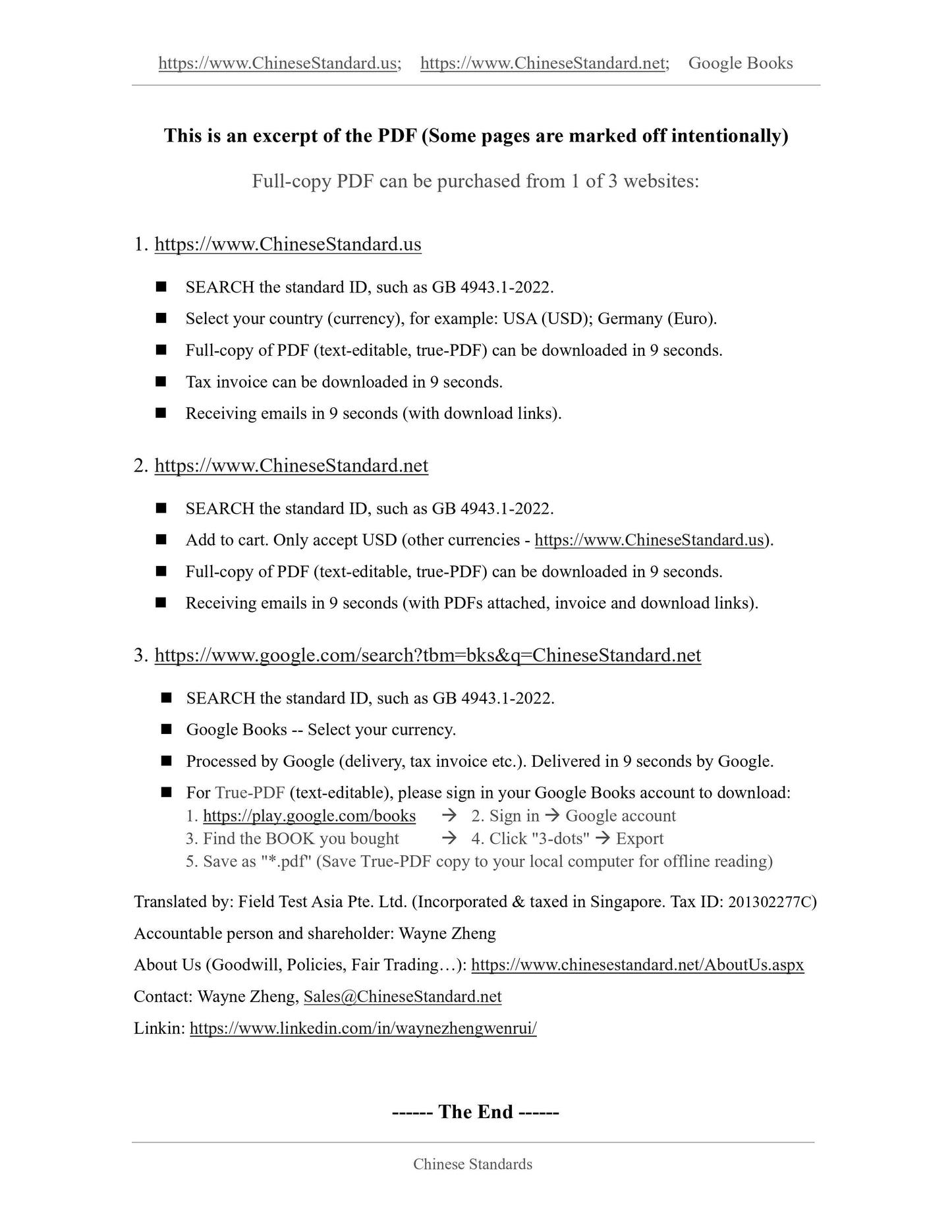1
/
of
11
www.ChineseStandard.us -- Field Test Asia Pte. Ltd.
JJG 1038-2008 English PDF
JJG 1038-2008 English PDF
Regular price
$250.00
Regular price
Sale price
$250.00
Unit price
/
per
Shipping calculated at checkout.
Couldn't load pickup availability
JJG 1038-2008: Verification Regulation of Goriolis Mass Flow Meters
Delivery: 9 seconds. Download (and Email) true-PDF + Invoice.Get Quotation: Click JJG 1038-2008 (Self-service in 1-minute)
Newer / historical versions: JJG 1038-2008
Preview True-PDF
Scope
This Regulation applies to the type evaluation, initial verification, subsequentverification and in-use inspection of Coriolis mass flow meters (hereinafter referred to
as flow meters).
Basic Data
| Standard ID | JJG 1038-2008 (JJG1038-2008) |
| Description (Translated English) | Verification Regulation of Goriolis Mass Flow Meters |
| Sector / Industry | Metrology and Measurement Industry Standard |
| Classification of Chinese Standard | A53 |
| Classification of International Standard | 17.120 |
| Word Count Estimation | 19,114 |
| Date of Issue | 2008-03-25 |
| Date of Implementation | 2008-06-25 |
| Older Standard (superseded by this standard) | JJG 897-1995 |
| Quoted Standard | JJF 1094-2002; JJF 1004-2004; GB 17820-1999; GB 50251-2003; GB/T 13609-1999; GB/T 13610-2003; GB/T 17747.2-1999; GB 3836.1-2000; GB 3836.2-2000; GB 3836.3-2000 |
| Regulation (derived from) | ?AQSIQ Announcement 2008 No.35; |
| Issuing agency(ies) | General Administration of Quality Supervision, Inspection and Quarantine |
| Summary | This standard applies to the brightness temperature (800 to 2500) within��C range of standard tungsten light (hereinafter referred to as tungsten light) for initial verification and follow-up test. |
Share
